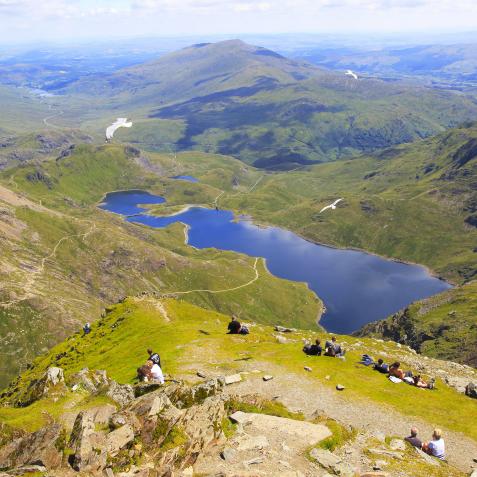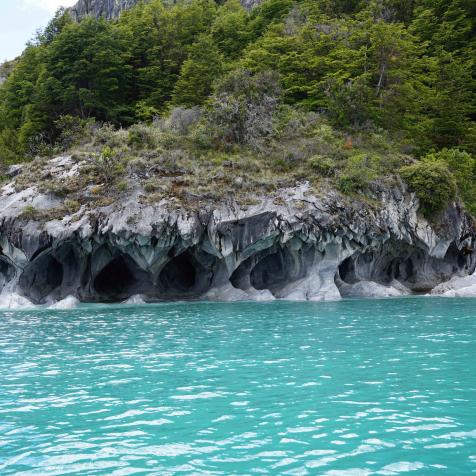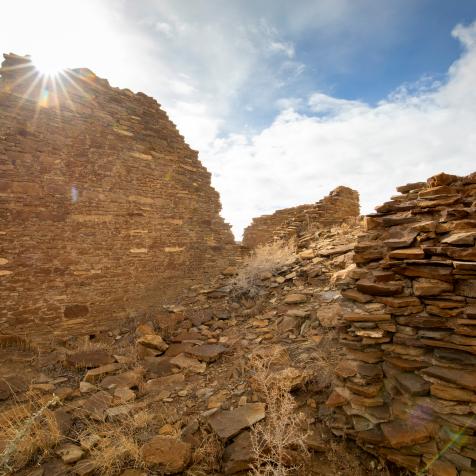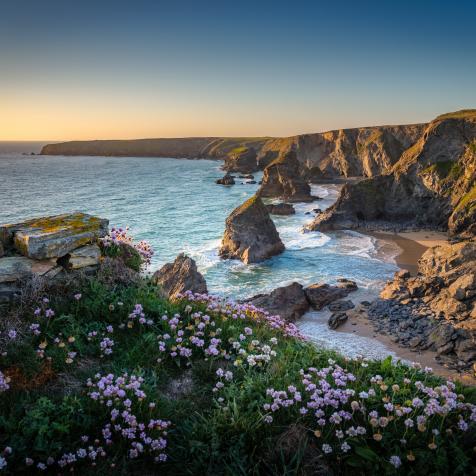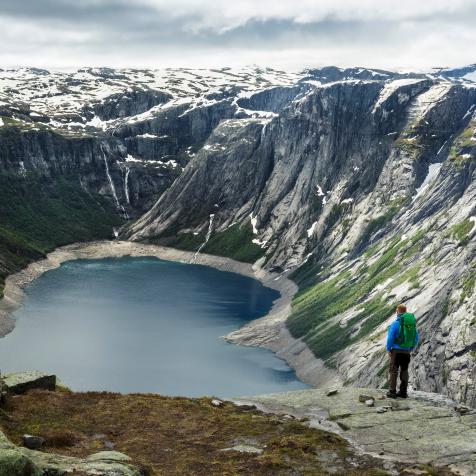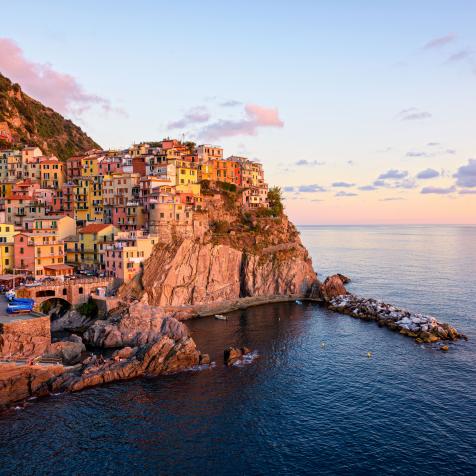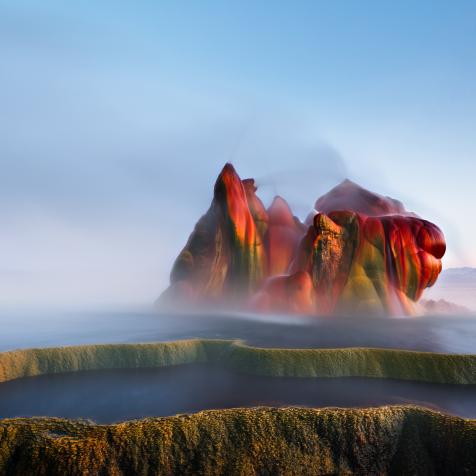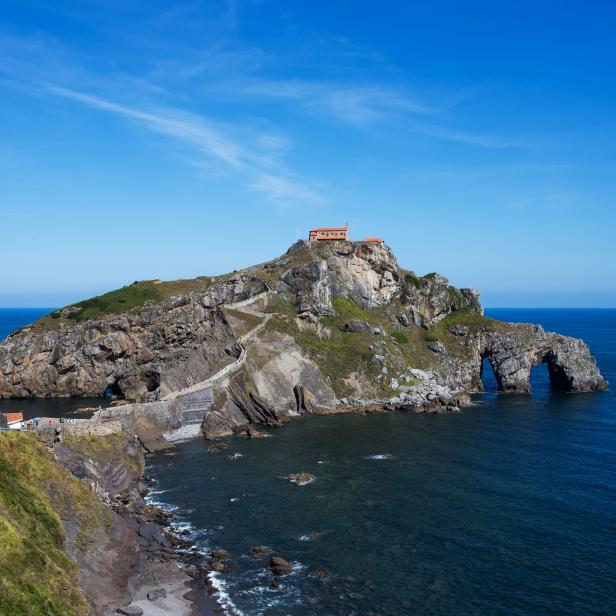
GettyImages/fhm
Retrace the Journeys of Pilgrims in Spain's Basque Country
Discovering shepherds' huts and Spanish vineyards in the Basque Country.
The stone walls, roaming sheep, and remote farmhouses that perch atop rugged mountains overlooking the ocean are the site of numerous pilgrim trails in Basque Country - known as Euskadi by its patriotic Basque inhabitants.
Basque Country, an autonomous area of Spain that straddles the border of France and located in the western Pyrenees mountains, is an outdoor-lover’s paradise. Not only is there top-class surfing on the Atlantic coastline, particularly in the town of Mundaka, but there’s also fascinating 50 million-year-old flysch rock formations in Zumaia, and superb hiking trails that snake alongside the coastline.
País Vasco, as it’s called in Spanish, boasts endless hikes, and if you want to take an adventure into history, then head to the Gipuzkoa province.
The towns of Zumaia and Zarautz can get crowded, so retreat inland to the tiny hamlet of Aizarnazabal and shack up on a farm before exploring in the footsteps of travelers from ancient times.

Anton Petrus
Sarasola-Zahar is a beautiful farmhouse with stunning views of the ocean. But its main draw is that it’s the perfect spot to explore the wild countryside of the Gipuzkoa. The area is intensely green, thanks to the plentiful rain the region receives, and packed with mountains with historical links to pilgrims of the past. Many of the mountains, such as Aiako Harria, Txindoki, and Izarraitz, have crosses on their summits in homage to the pilgrimages that were once made.
Pack a picnic and strap on your hiking boots before getting lost in the misty mountains. As you hop over stone walls, get acquainted with local sheep and weave through vineyards. There’s plenty to explore in the area without needing your phone’s GPS – most of the local hikes are signposted and don’t appear online in any searches. You’ll have to rely on local knowledge and your navigation skills instead. Opt for the Zumaia to Deba trail, a 15.1 mile out and back trail showcasing beautiful wildflowers, farmland, and forest.
If you’re after more than a day hike, then explore Spain’s “cheese route”, a hike that links the farms and dairies that make the area’s prized raw sheep’s milk cheese Idiazábal. The circular walk takes around six days to complete. It begins and ends in Segura, and allows you to take in views of snow-capped mountains, shepherds’ huts, lush green valleys, and craggy peaks.
For history devotees, the Ignatian Way trail recreates the journey St Ignacio de Loyola, a Basque Catholic priest who co-founded the Jesuits, took in 1522. The entire route from Loyola to Manresa is 420 miles long, with the Basque section considered the most significant, making up the first two stages of the route. Starting at Loiola Sanctuary, the saint’s birthplace, the trail passes La Ermita de la Antigua, known as the cathedral of all hermitages, and finishing at Arantzazu Sanctuary, where the Virgin Mary was reported to have appeared to a shepherd in 1469.

GettyImages/David & Micha Sheldon
Or join the Camino del Norte hiking trail, a route running from Irún, on the border with France, to Arzua, which takes weeks to complete--or dip in and out along the way. Some of the most beautiful sections are from San Sebastián to Zarautz.
Tourists that visit Basque Country usually head straight to Donostia-San Sebastian, well known for its pintxos – the region’s tapas – and Michelin-starred restaurants. But it’s the tiny towns, cobbled streets, lush countryside, and humble churches that hold the real magic of País Vasco.









